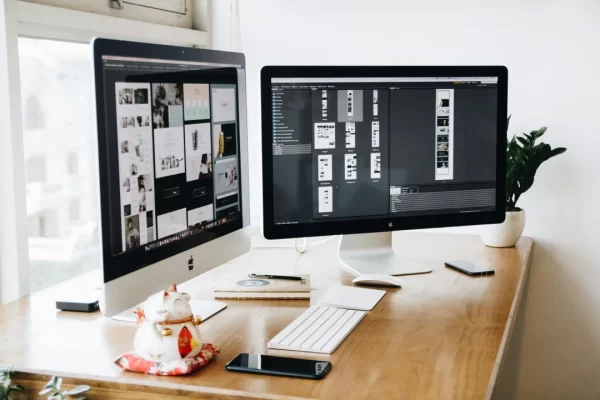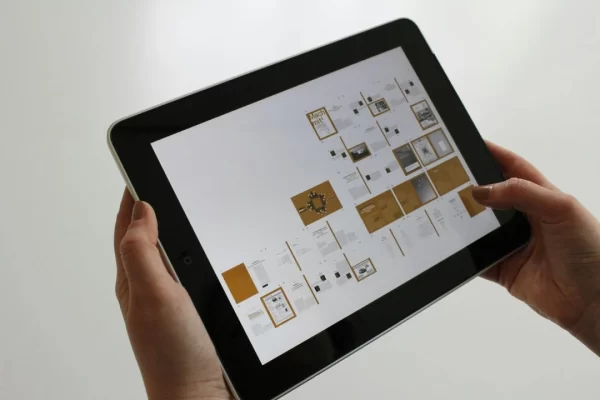WordPress powers over 43% of websites globally, making it a prime target for cyber threats. While the platform itself is secure, vulnerabilities often arise due to poor security practices by users. To prevent your website from becoming an easy target for hackers, implementing robust security measures is essential.
As a leading web design agency in Melbourne, we’ve compiled 14 expert tips to help you secure your WordPress website and safeguard it against cyberattacks.
Why You Need to Secure Your WordPress Website
With cyber threats on the rise, securing your WordPress website is more important than ever. Hackers exploit weak passwords, outdated software, and vulnerable plugins to gain unauthorized access. A compromised website can lead to data theft, reputational damage, and even financial loss.
Let’s explore the best strategies to fortify your site’s security.
1. Keep Your WordPress Website Updated
One of the simplest yet most effective ways to secure your WordPress website is by keeping it updated. WordPress regularly releases security patches and bug fixes, so staying up-to-date protects you from known vulnerabilities.
How to Keep WordPress Updated:
- Enable automatic updates for minor releases
- Regularly update themes and plugins
- Remove unused plugins and themes
2. Change the Default Admin Username
Using the default “admin” username makes it easier for hackers to guess login credentials. Change it to a unique name to add an extra layer of protection.
Steps to Change Your Admin Username:
- Create a new user with administrator rights
- Log in with the new account and delete the old “admin” user
- Assign all previous content to the new user
3. Use Strong Passwords
A strong password is crucial for securing your WordPress website.
Ensure your password:
- Is at least 12 characters long
- Includes a mix of uppercase, lowercase, numbers, and special characters
- Is unique and not used for other accounts
4. Enable Two-Factor Authentication (2FA)
Two-Factor Authentication (2FA) adds an extra layer of security by requiring a one-time code in addition to your password.
Recommended 2FA Plugins:
- Google Authenticator
- Duo Security
- WP 2FA
5. Schedule Regular Website Backups
Regular backups ensure that you can restore your site quickly if it’s compromised.
Best Backup Solutions:
- UpdraftPlus
- BackupBuddy
- VaultPress
6. Install a Trusted WordPress Security Plugin
A reliable security plugin can help detect and prevent security threats.
Top Security Plugins:
- Wordfence Security
- Sucuri Security
- iThemes Security
7. Use Only Trusted Plugins and Themes
Malicious plugins and themes can introduce security vulnerabilities. Only download from reputable sources like the WordPress repository or trusted developers.
How to Ensure Plugin and Theme Safety:
- Read user reviews
- Check update history
Verify compatibility with your WordPress version
8. Use a WordPress Child Theme
A child theme allows you to customize your website without modifying core theme files, reducing security risks when updating your parent theme.
9. Limit Login Attempts
Limiting login attempts helps prevent brute-force attacks.
How to Limit Login Attempts:
- Use a security plugin like Limit Login Attempts Reloaded
- Modify your .htaccess file to restrict login attempts
10. Hide Your Admin Login URL
By default, the WordPress login page is accessible at /wp-admin or /wp-login.php. Changing this URL makes it harder for hackers to locate.
Recommended Plugins for Hiding Admin URLs:
- WPS Hide Login
- Rename wp-login.php
11. Disable File Editing
Prevent unauthorized users from modifying your theme and plugin files by disabling file editing in WordPress.
How to Disable File Editing:
Add the following line to your wp-config.php file:
define(‘DISALLOW_FILE_EDIT’, true);
12. Protect wp-config.php from Unauthorized Access
The wp-config.php file contains sensitive information about your site. Restrict access by adding this rule to your .htaccess file:
<files wp-config.php>
Order allow,deny
Deny from all
</files>
13. Secure Your .htaccess File
The .htaccess file controls important security settings for your WordPress website. Protect it from unauthorized access with the following code:
<files .htaccess>
Order allow,deny
Deny from all
</files>
14. Enable SSL/HTTPS
SSL encrypts data transferred between your website and visitors, preventing hackers from intercepting sensitive information.
How to Get an SSL Certificate:
- Obtain a free SSL from Let’s Encrypt
- Purchase an SSL certificate from your hosting provider
- Additional WordPress Security Tips
- To further secure your WordPress website, consider:
- Scanning your website for malware
- Using a Web Application Firewall (WAF)
- Monitoring user activity logs
- Choosing a secure and reliable hosting provider
FAQs on How to Secure Your WordPress Website
1. How often should I update WordPress, plugins, and themes?
You should update them as soon as new versions are available to protect against security vulnerabilities.
2. Can I secure my WordPress website without a plugin?
Yes, you can manually implement security measures like disabling file editing, changing login URLs, and restricting access to sensitive files.
3. How do I know if my WordPress site has been hacked?
Common signs include unexpected redirects, unknown admin accounts, slow performance, or altered content.
4. What is the best security plugin for WordPress?
Popular security plugins include Wordfence, Sucuri Security, and iThemes Security.
5. How do I back up my WordPress website?
You can use plugins like UpdraftPlus, BackupBuddy, or VaultPress to schedule automated backups.
Gear Up and Be Secured with Digital Rescue
Website security maintenance doesn’t have to be complex or expensive. You’ll feel safe and secure online if you put measures in place to defend your website from attacks and have tools for quick problem identification. Are you looking for a simple approach to control the security of your website?
Hire a web design agency that has the knowledge and expertise to provide your company with unparalleled security to do it right. Contact us today! With more than 20+ years of experience in the industry, impeccable quality results are always guaranteed with us!



